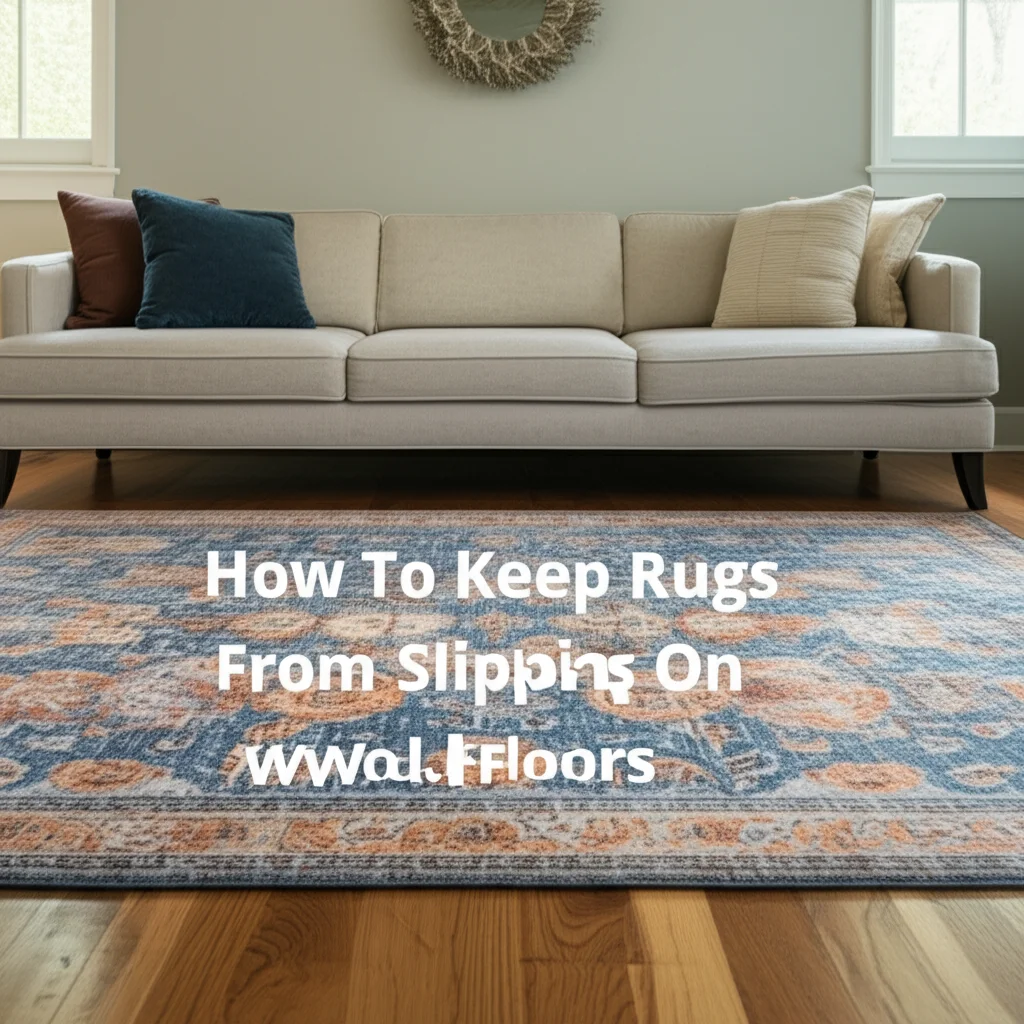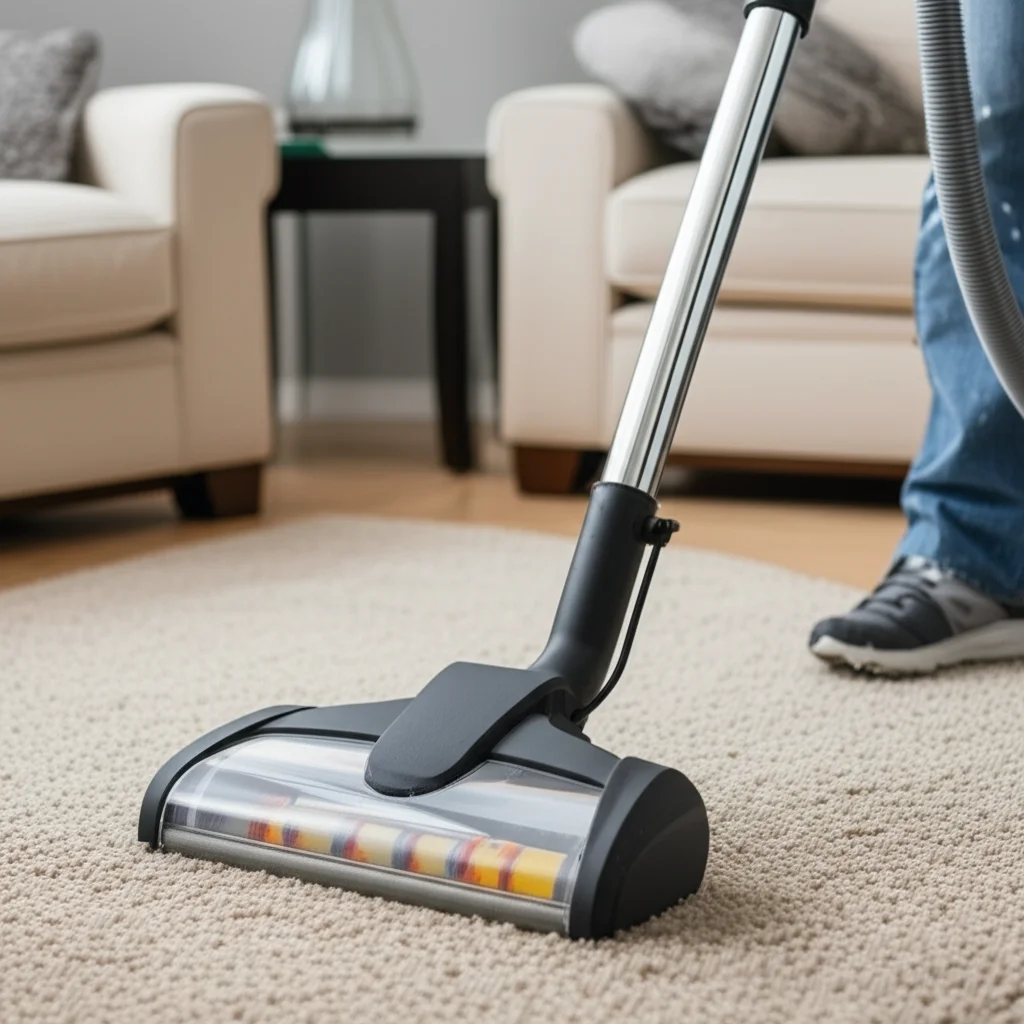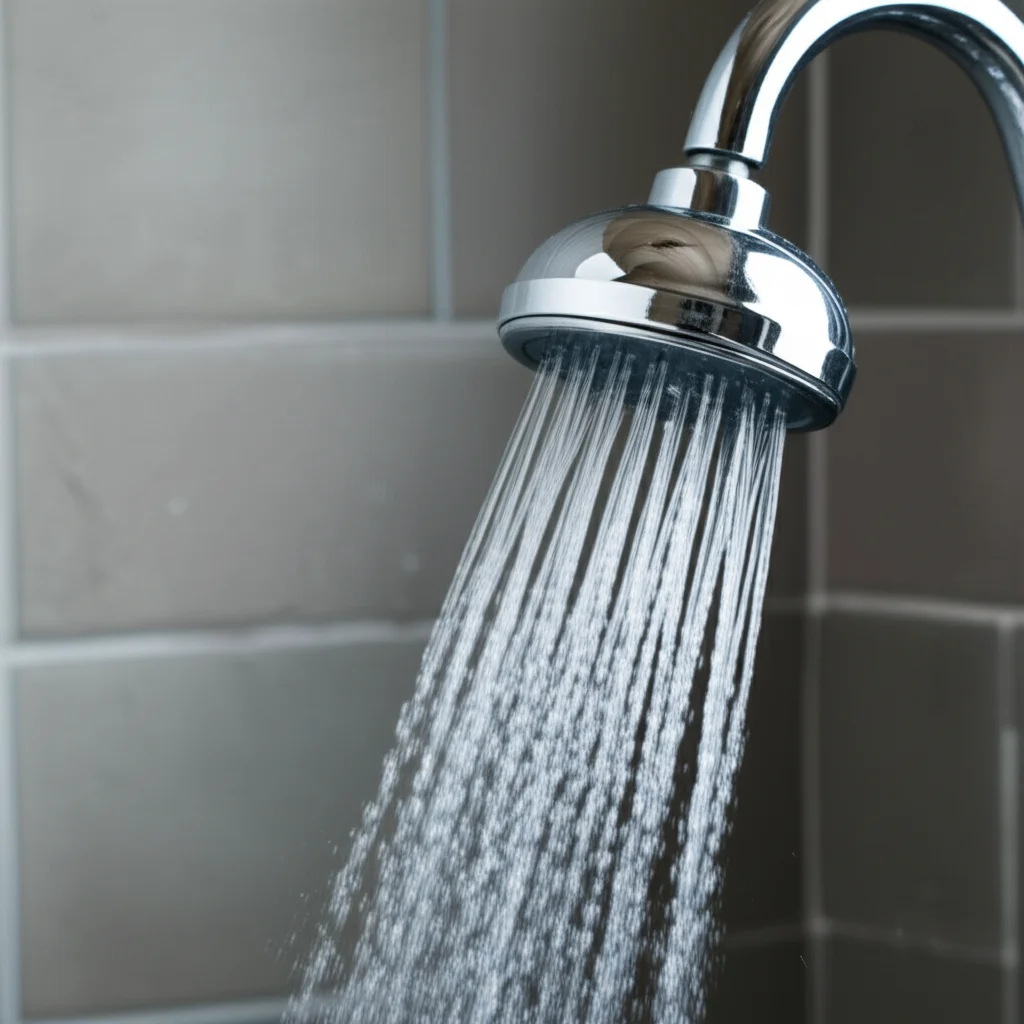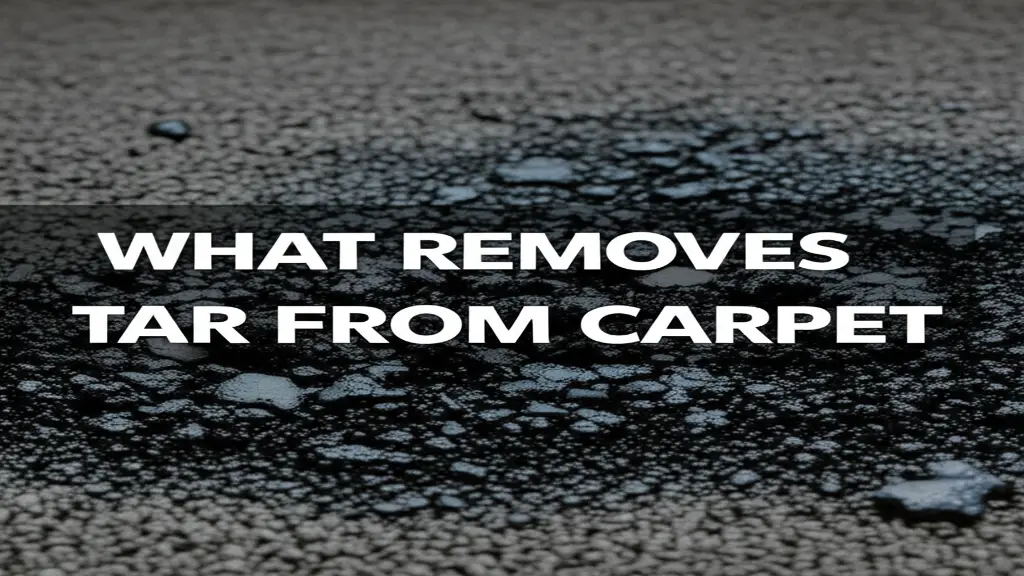· Todd Martin · Home Cleaning & Maintenance · 12 min read
How To Keep Rugs From Slipping On Wood Floors

How To Keep Rugs From Slipping On Wood Floors: 9 Effective Solutions
Quick Takeaway
- Non-slip rug pads are the most popular and effective solution
- Double-sided tape offers a quick, affordable fix
- Silicone caulk creates custom grip patterns for long-term stability
- Rug grippers provide targeted corner and edge stability
- Regular maintenance improves safety and extends the life of both rugs and floors
Looking for ways to prevent your beautiful rugs from becoming sliding hazards on your wood floors? Slipping rugs aren’t just annoying—they pose genuine safety risks. Fortunately, several proven methods can keep your rugs securely in place without damaging your hardwood floors. From specialized rug pads to DIY solutions, this comprehensive guide covers everything you need to know to eliminate the frustrating and dangerous problem of sliding rugs.
Why Rugs Slip on Wood Floors
Before diving into solutions, it’s important to understand why rugs tend to slip on wood surfaces. Wood floors, particularly those with smooth finishes, provide minimal friction. When you combine this slick surface with lightweight rugs or those made from smooth materials like silk or synthetic fibers, you create perfect conditions for slippage.
Several factors contribute to rug movement on wood floors:
- Smooth floor finishes: Polished or freshly refinished hardwood has less natural grip
- Rug materials: Lightweight cotton, synthetic fibers, and silk rugs slide more easily
- Rug construction: Thinner rugs with smooth backings have less natural stability
- Traffic patterns: Areas with frequent foot traffic or furniture movement experience more rug displacement
- Humidity changes: Wood floors can become more slippery in different humidity conditions
Understanding these factors helps you choose the most appropriate solution for your specific situation. Now, let’s explore the most effective methods to keep area rugs from slipping on hardwood floors.
1. Non-Slip Rug Pads: The Most Popular Solution
Non-slip rug pads are often the first line of defense against sliding rugs and for good reason. These specially designed pads create friction between your rug and floor while providing additional benefits like cushioning and protection.
Types of Non-Slip Rug Pads
Different materials offer varying advantages:
- PVC or vinyl pads: Thin with excellent grip, though not ideal for all floor finishes
- Natural rubber pads: Environmentally friendly with superior grip and longevity
- Felt-rubber combination pads: Provide both grip and cushioning
- Mesh pads: Lightweight and allow airflow, ideal for areas prone to humidity
When selecting a non-slip pad, ensure it’s slightly smaller than your rug (about 1 inch shorter on all sides) to prevent visibility and tripping hazards. Quality matters—cheaper pads may contain adhesives or chemicals that can damage or discolor wood finishes over time.
“A good quality rug pad is the single most effective investment you can make for both rug stability and floor protection.”
Natural rubber pads typically offer the best combination of grip and floor protection for hardwood surfaces. However, they can be more expensive than synthetic alternatives. Consider your budget, rug size, and traffic patterns when making your selection.
2. Double-Sided Tape: Quick and Affordable
For those seeking a quick fix or temporary solution, double-sided carpet tape offers an affordable option to stop rugs from sliding on wood floors. This method works particularly well for smaller rugs or runners.
How to Apply Double-Sided Tape Correctly:
- Clean both the floor and rug backing thoroughly
- Allow surfaces to dry completely
- Apply strips of tape around the rug perimeter (about 2-3 inches from edges)
- Add additional strips in a grid pattern for larger rugs
- Remove backing from tape and press the rug firmly into position
When selecting tape, look specifically for products labeled as safe for wood floors. Regular carpet tapes can leave sticky residue or even damage finishes when removed. Removable or temporary options exist that provide adequate grip while being gentler on surfaces.
While effective in the short term, tape typically needs replacement after cleaning the rug and may lose effectiveness over time. It’s an excellent solution for temporary setups or when you need an immediate fix while waiting for a more permanent solution.
3. Silicone Caulk: DIY Custom Grip
A more creative DIY solution involves applying dots or lines of silicone caulk to the underside of your rug. This method creates a custom grip pattern that can be particularly effective for smaller rugs or those in low-traffic areas.
Creating a Silicone Caulk Grip Pattern:
- Flip your rug upside down on a clean surface
- Apply small dots or thin lines of clear silicone caulk around the perimeter and in a grid pattern
- Allow the caulk to dry completely (typically 24-48 hours)
- Place the rug in position
This solution is surprisingly durable, often lasting through multiple cleanings. The silicone creates rubber-like grip points that maintain strong contact with the floor. For best results, use clear, non-adhesive silicone that won’t discolor your rug or floor.
One advantage of this method is customization—you can add more caulk to high-movement areas for targeted stability. However, the application process requires patience, and removing silicone later can be challenging if you change your mind.
4. Rug Grippers and Corner Anchors
If your rug primarily moves at the corners or edges, specialized rug grippers may be the perfect solution. These products target problem areas without requiring full rug pads.
Rug grippers come in several forms:
- Corner grippers: Small triangles that secure just the corners
- Edge grippers: Strips that stabilize entire edges
- Gripper discs: Round pads placed strategically under problematic areas
Most modern rug grippers for hardwood floors use either suction technology, washable adhesives, or hook-and-loop systems. They’re typically reusable and leave no residue on floors, making them ideal for renters or those who frequently redecorate.
Installation is straightforward—simply place grippers in strategic positions, ensure they’re clean, and press firmly to activate adhesion or suction. Many designs allow for rug washing without removing the grippers completely.
While not always sufficient for very large rugs or high-traffic areas, grippers offer an excellent targeted solution that’s especially useful for troublesome rugs that slide despite other interventions.
5. Furniture Placement for Rug Stability
Sometimes the simplest solution is the most elegant. Strategic furniture placement can effectively anchor rugs without requiring additional products. This method works particularly well for living room area rugs and dining room settings.
Effective Furniture Placement Strategies:
- Position heavier furniture pieces so at least the front legs rest on the rug
- For dining areas, ensure the table and all chairs (even when pulled out) remain on the rug
- Use furniture with rubber or felt feet for added stability
- Distribute weight evenly across the rug surface when possible
The key advantage of this approach is its integration with your existing décor. No additional products means no potential chemical interactions with your flooring or hidden elements that might affect appearance.
For optimal results, combine furniture anchoring with one of the other methods discussed for areas of the rug that remain exposed to foot traffic. This creates a comprehensive solution that addresses both furniture movement and walking patterns.
6. Non-Slip Rug Backing Sprays and Treatments
For those who prefer not to use physical anchors or pads, non-slip spray treatments offer an alternative approach. These products create a temporary grippy coating on the rug backing.
How to Apply Non-Slip Treatments:
- Thoroughly clean and dry the rug backing
- Test the spray on an inconspicuous area first
- Apply evenly to the entire underside of the rug in a well-ventilated area
- Allow to dry completely according to product instructions
- Reapply after cleaning or when effectiveness diminishes
These sprays work by adding texture and tackiness to smooth rug backings. While convenient, their effectiveness varies significantly between products and rug types. They generally work best on synthetic rug backings and may be less effective on natural fiber rugs.
The main advantage is invisibility—no pads or devices are required. However, most sprays require regular reapplication, especially after rug cleaning. Look for formulations specifically labeled as safe for wood finishes to protect wood floors from potential damage.
7. Washable Non-Slip Rug Mats
For areas requiring frequent cleaning, such as entryways or kitchens, washable non-slip mats offer a practical solution. Unlike traditional rug pads, these specialized mats can be cleaned repeatedly without losing their grip properties.
Popular options include:
- Rubber mesh mats: Allow airflow and easy cleaning
- Waffle-textured pads: Provide excellent grip and cushioning
- Vinyl lattice mats: Resist moisture and mildew
These products are particularly valuable for bathroom rugs and kitchen areas where spills are common. Most can be machine washed or hosed off outdoors, though always follow manufacturer instructions for cleaning.
When selecting washable mats, look for options that won’t shrink or warp after washing. Some budget products lose their dimensions after cleaning, which reduces their effectiveness. Quality materials maintain their shape and grip properties through multiple cleaning cycles.
8. DIY Anti-Slip Solutions
For the budget-conscious or those who prefer household remedies, several DIY approaches can improve rug stability:
Effective Household Anti-Slip Methods:
- Hot glue dots: Apply small dots of hot glue in a grid pattern on the rug backing
- Shelf liner: Cut non-adhesive shelf liner to fit under problematic rugs
- Velcro strips: Attach hook-and-loop fasteners to both floor and rug for strong anchoring
- Rubber window mesh: Cut to size for an inexpensive grip surface
While these methods vary in durability and effectiveness, they often provide adequate grip for lighter rugs or temporary situations. The hot glue method, in particular, offers surprising longevity and can be removed with careful use of a hairdryer if needed.
When implementing DIY solutions, always test on small areas first to ensure they won’t damage your specific floor finish. What works safely on one wood floor may not be appropriate for all finishes.
9. Regular Maintenance for Optimal Grip
Sometimes the solution isn’t adding something new but maintaining what you already have. Regular rug and floor maintenance significantly impacts stability and safety.
Maintenance Practices That Improve Grip:
- Vacuum rugs regularly to prevent debris buildup that can create unevenness
- Clean wood floors with appropriate products that don’t leave slippery residues
- Wash and thoroughly dry non-slip pads according to manufacturer instructions
- Check and replace worn rug pads or grippers before they fail completely
- Address curling corners or edges promptly to prevent tripping hazards
Proper maintenance also extends the life of both your rugs and floors. Dirt particles trapped between rugs and wood surfaces can act like sandpaper, gradually damaging floor finishes during movement.
For maximum effectiveness, establish a regular maintenance schedule based on traffic patterns in your home. High-use areas may require weekly attention, while formal spaces with limited use may need only monthly checks.
Choosing the Right Solution for Different Rugs
Not all rugs present the same challenges when it comes to slipping. Here’s a quick guide to matching solutions with specific rug types:
- Large area rugs: Combination of furniture anchoring and quality rug pads
- Runners in hallways: Full non-slip pads or washable grip mats
- Small accent rugs: Corner grippers or double-sided tape
- Antique or valuable rugs: Natural rubber pads without adhesives
- Kitchen rugs: Washable grip mats that resist moisture
- Bathroom rugs: Specialized bathroom rug grips that resist humidity
Consider both the rug construction and placement when selecting your approach. Areas with significant foot traffic or furniture movement generally require more robust solutions than decorative rugs in low-use spaces.
FAQ: Common Questions About Keeping Rugs from Slipping
How do I stop a rug from sliding on wood floors without damaging the finish?
Natural rubber rug pads provide excellent grip without releasing harmful chemicals or adhesives that might damage wood finishes. Always choose products specifically labeled as safe for hardwood floors, and avoid PVC-based products which can cause discoloration over time.
Can I use regular double-sided tape on hardwood floors?
Regular double-sided tape is not recommended as it often leaves sticky residue and may damage finishes when removed. Instead, use specialty removable carpet tape designed for wood floors, which provides adequate grip while releasing cleanly.
How often should I replace non-slip rug pads?
Quality non-slip pads typically last 1-5 years depending on traffic, cleaning frequency, and material. Replace pads when you notice decreased effectiveness, physical deterioration, or discoloration. Natural rubber pads generally outlast synthetic options.
Do rug grippers work on all types of wood floors?
Most modern rug grippers work effectively on sealed wood floors. However, some suction-based products may not adhere properly to textured or very porous wood surfaces. For oil-finished or unsealed floors, mechanical grippers or heavy rug pads are typically more effective than adhesive solutions.
What’s the best solution for antique or valuable oriental rugs?
For valuable rugs, use only natural rubber or felt-rubber combination pads without adhesives. These provide grip while allowing the rug to “breathe” and protecting both the rug fibers and floor finish. Avoid any treatments that might discolor or chemically interact with natural dyes.
How do I keep outdoor rugs from slipping on a wooden deck?
For outdoor applications on wood decks, look for marine-grade non-slip pads that resist mildew and water damage. In windy conditions, combine these with strategies to keep outdoor rugs from blowing away such as furniture anchoring or specialized outdoor rug tape.
Can I put rugs on freshly refinished hardwood floors?
Wait at least 2-4 weeks (depending on the finish type) before placing rugs on newly refinished wood floors. Once cured, use natural rubber pads without plasticizers or chemicals that might react with the fresh finish. This timing allows the finish to fully harden and release volatile compounds.
Final Thoughts: Safe and Stable Rugs for Beautiful Homes
Keeping rugs from slipping on wood floors is both a safety necessity and a way to preserve the beauty of your home. By choosing the right solution for your specific situation—whether that’s high-quality rug pads, strategic furniture placement, or one of the many other effective methods—you can enjoy the warmth and style rugs bring to your wood floors without worrying about dangerous sliding.
Remember that proper maintenance plays a crucial role in both stability and longevity. Regular attention to your rugs, floors, and whatever grip solution you choose will ensure continued effectiveness and protection for all your surfaces.
With these proven techniques, you can confidently design your space with the perfect combination of beautiful wood floors and stylish, securely anchored rugs.





